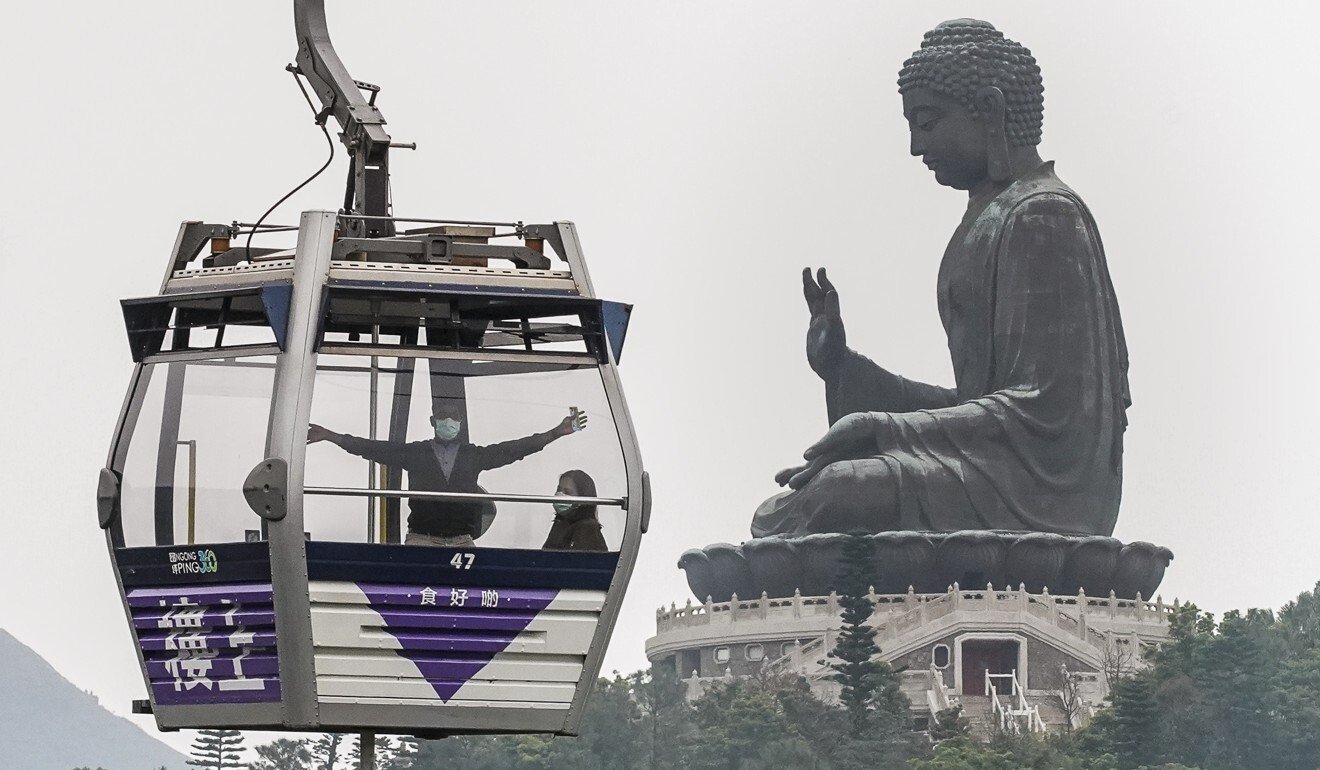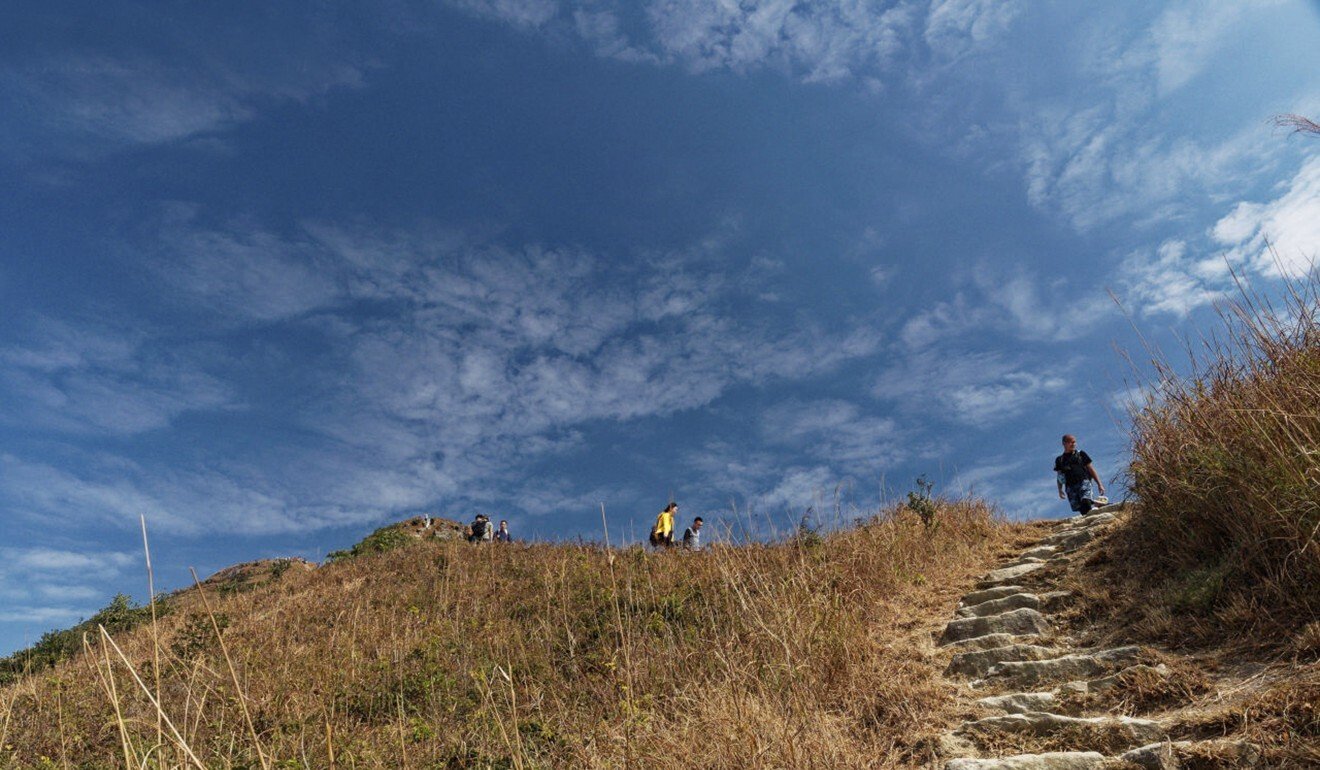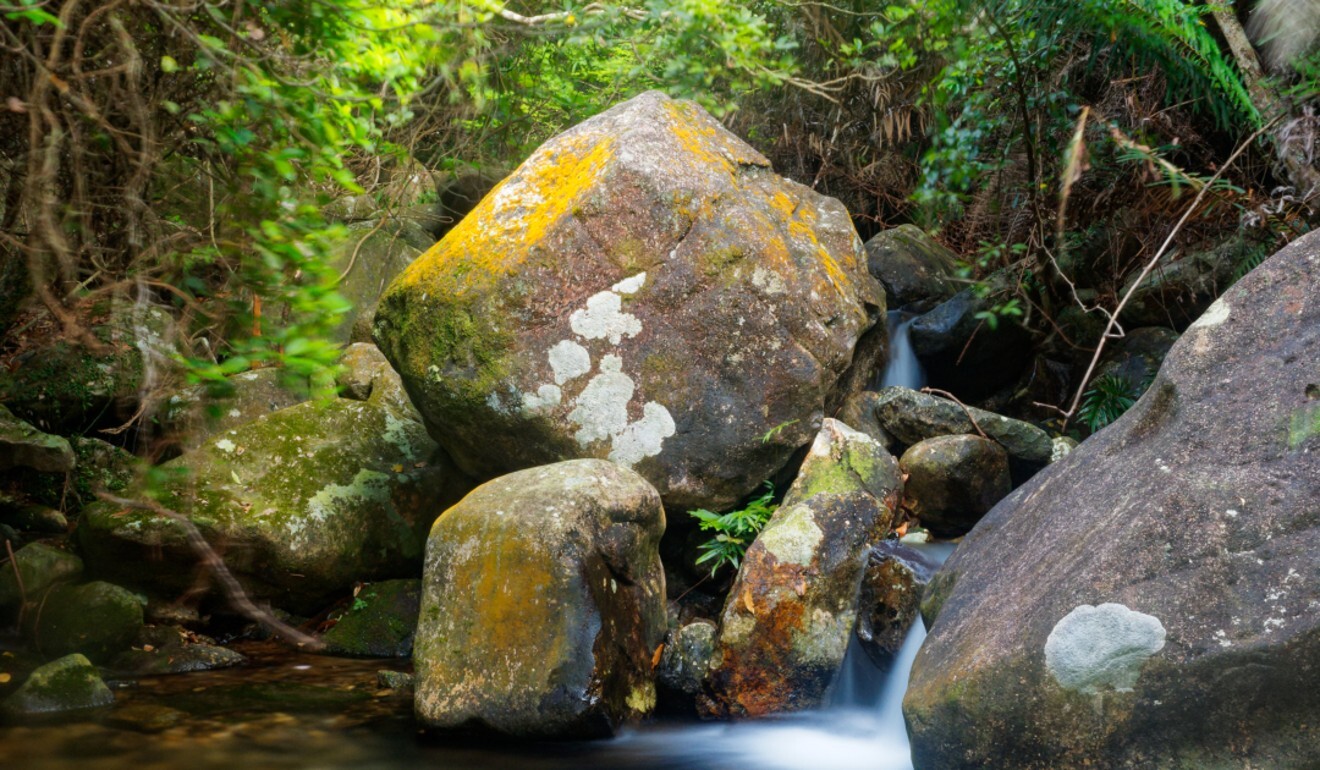
Hikes around Lantau Peak from the Ngong Ping plateau, home of Hong Kong’s Big Buddha
- Some of Lantau’s trails make for challenging treks, but you can start well above sea level at Ngong Ping, accessible by bus or cable car
- From there you can scale Lantau Peak, the second highest in Hong Kong, or wander its slopes, for views of China, Hong Kong Island and the South China Sea
It can be enjoyable to hike up and over hills, but there may be times when you prefer to start from somewhere that is already well above sea level – particularly once the summer heat has arrived. Somewhere, for example, like Ngong Ping, an upland basin on Lantau Island.
Ngong Ping can be reached on one of Hong Kong’s most scenic bus rides, from either Mui Wo (bus No 2) or Tung Chung (bus No 23), both of which deliver views of hillsides, shorelines and Lantau Peak soaring above the Shek Pik Reservoir. Buses terminate beside Ngong Ping Village, a purpose-built tourist attraction.

Reaching the edge of the wood, turn right to the Wisdom Path and you may wonder whether it really was “wise” to have imported the trunks of 38 trees from Africa, on which to carve Buddhist scripture, and array them, starkly upright, on a patch of cleared ground.
On clear days, Lantau Peak is a more impressive viewpoint, but getting to the top requires far more effort. The main route up follows section three of the Lantau Trail, which begins next to the short, looping Wisdom Path. The trail is easy going at first, with occasional flights of stone steps, as it curls up and around the hillside. But the hiking soon becomes a more intense workout, as uneven flights of steps lead up the steep west face of Lantau Peak.
Regenerating woodland affords some shade, and gaps in the trees reveal Ngong Ping gradually receding below. Along the final stretch up this slope, the path emerges from tree cover to reach a ridge leading roughly southwest down from the summit of Lantau Peak.
Heading upwards from Bird Rock, there are more boulder steps.

The Lantau Peak summit isn’t spectacular in itself, with just a jumble of large rocks and a low stone hut that could act as a shelter if the weather turns nasty, but you’ve reached an altitude of 934 metres, just 23 metres shy of Hong Kong’s highest point, the tip of Tai Mo Shan.
Air quality permitting, from Lantau Peak you can see across the Pearl River mouth to Zhuhai and Macau, north to Shenzhen, and east to Hong Kong Island. Rugged hills rather than urban skylines dominate the views, with Sunset Peak blocking Kowloon from sight altogether. To the south, the Soko Islands and other islets dot the South China Sea.
Heading eastward, the Lantau Trail drops down flights of rock steps interspersed with gentler stretches across soil and small stones. This is a wild landscape, expansive views across grassy hillsides increasingly dominated by Sunset Peak as you descend. After crossing a relatively level area, the trail winds down through a belt of trees and arrives at Pak Kung Au, a pass between the Lantau and Sunset peaks, where you may choose to catch a bus or carry on hiking.

One of a number of easier Ngong Ping hikes is the 5.5km Shek Pik Country Trail, which begins by the Wisdom Path, wends its way down the southern slope of Lantau Peak and ends at South Lantau Road. Before reaching the road, the pleasant woodland trail crosses a stream with cascades, a welcome place in which to rest and cool down during the summer.
Alternatively, head north from the Wisdom Path, along the Ngong Ping Tree Trail. This gentle path passes trees that are scrawny youngsters compared with those of the primary forests that clothed much of Hong Kong before man arrived. Signs in front of some provide species names along with other snippets of information.
It should take only 10 minutes to reach the tree trail’s end, at a narrow concrete road. A right turn right takes you along a path that exits Ngong Ping towards Tung Chung, and in front is a rough path up the hillside. A short, easy climb up that hillside brings you to a junction with the Nei Lak Shan Country Trail. This trail makes a circuit of the hill, hugging the 500-metre contour and offering contrasting views to east and west.

Along the east slope of Nei Lak Shan, the trail overlooks Tung Chung and the airport, and in places tunnels through dense woods. It curls round the northern slope, passing below a stretch of the Ngong Ping 360 cable car, and meets a path that drops down to the cable car station. Views along the west slope of the country trail include those over the nearby Po Lin Monastery.
Walk roughly 5km along the Nei Lak Shan Country Trail and you’ll come full circle, back to the path towards Tung Chung, which angles down a slope with more woodland, but no steps – not at this stage, anyway.
This path leads to Tei Tong Tsai, where a loose grouping of two Buddhist temples and a monastery seems better suited to a life of contemplation than the modern-day tourist magnet of Po Lin. Beyond, the path becomes steeper, flights of concrete steps leading to the hamlet of Shek Mun Kap, 2km from Tung Chung town centre.

There’s an alternative to this trail, too. Just after Tei Tong Tsai, look for a signpost on the right indicating the Tei Tong Tsai Country Trail. Rather than dropping into the valley, this trail heads up through trees, then winds gently along the hillside towards the pass at Pak Kung Au.
Even when other routes in the area are thronged with people escaping the city’s confines, you might encounter few hikers along the Tei Tong Tsai Country Trail, and be able enjoy the sort of tranquillity that led to so many monasteries being established on Lantau – or, as the Hong Kong Tourism Board has referred to it, the Island of Prayer.

